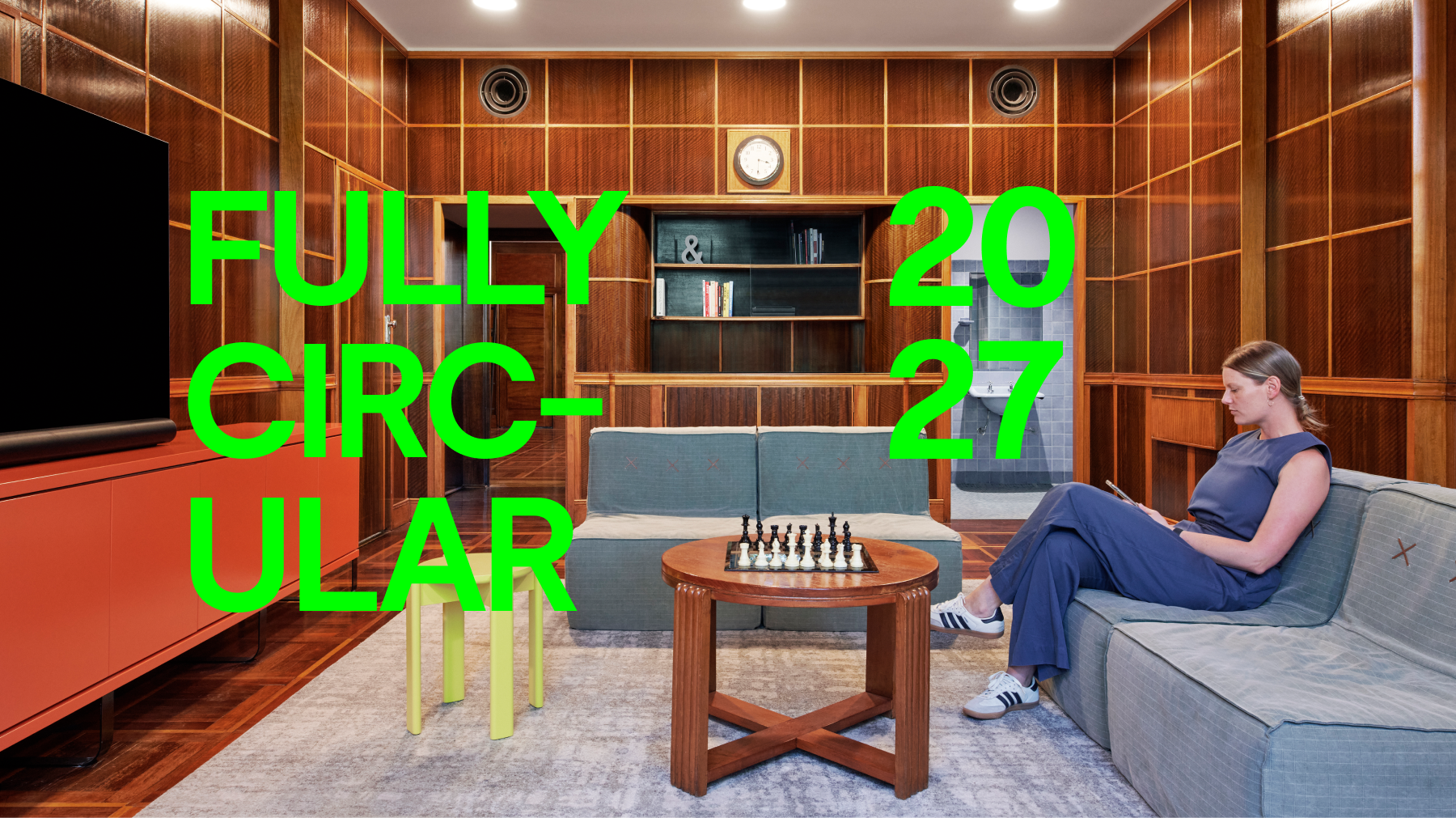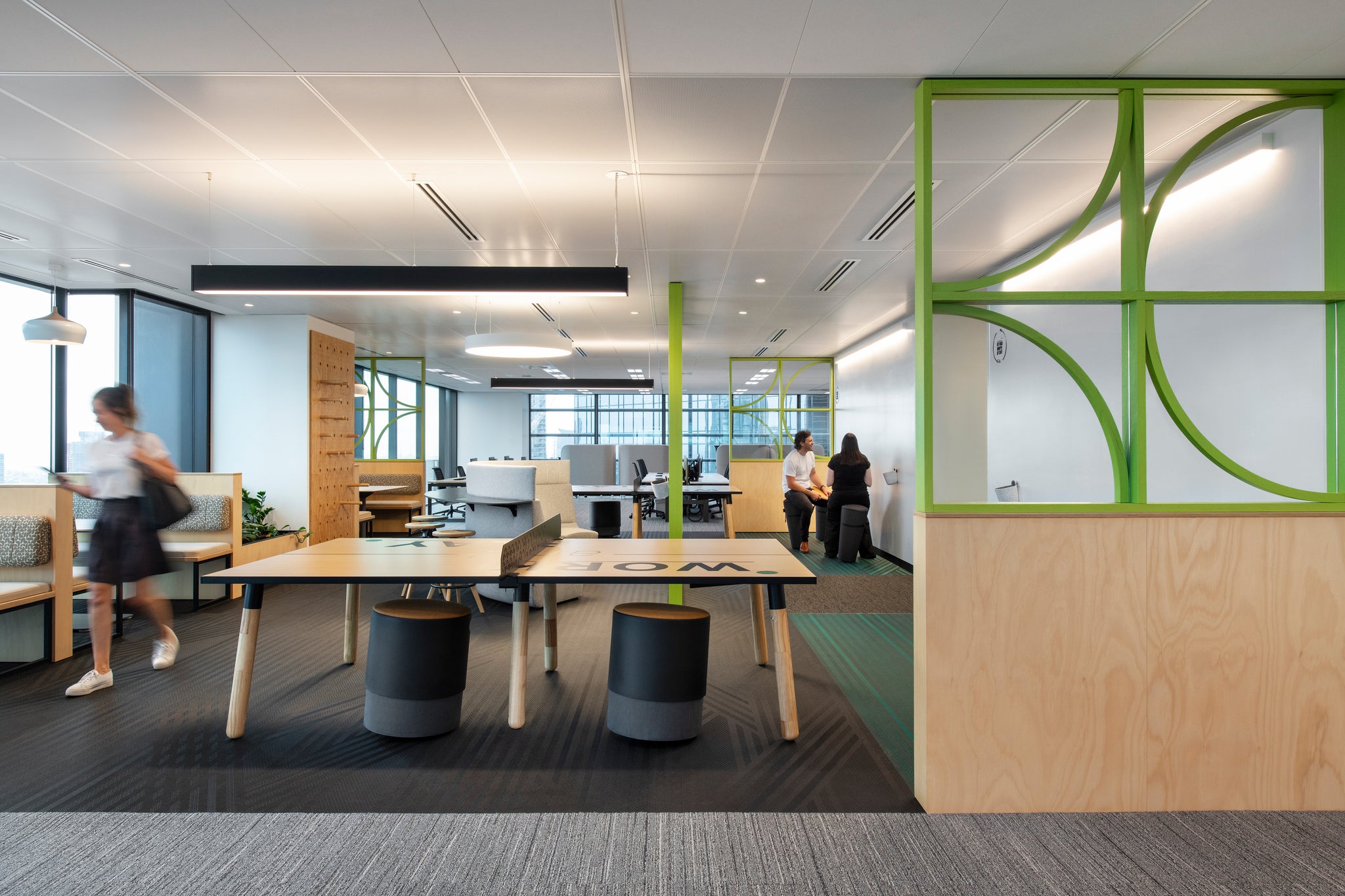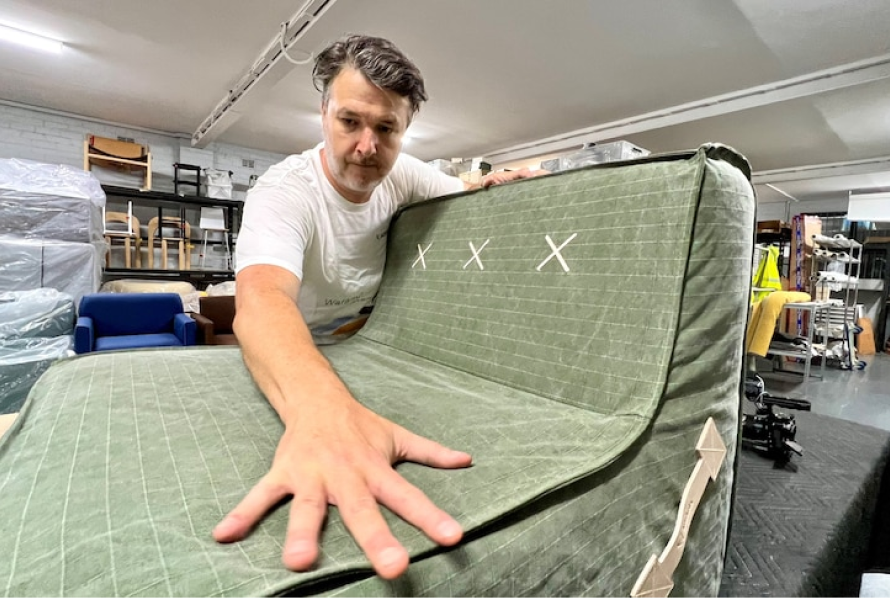Work
Circular offices: How to reduce waste in your workplace
Circular offices: How to reduce waste in your workplace
The world is stuck in a cycle of overconsumption and waste that is swiftly driving us towards catastrophic levels of global heating. Confrontingly, much of this comes from our own backyard, with Australia among some of the greatest producers of waste in the world.
Currently on a journey to becoming fully circular by 2027, Koskela is passionate about helping other businesses embrace a more sustainable path as well. Here, Koskela CEO, Sasha Titchkosky, shares some advice on how to reduce office waste.

Beyond the recycling bin: a human solution
With the increasing popularity of green leases and workers pushing employers to embrace more sustainable practices, there has never been a better time to strive to become a Zero Waste workplace. So, what exactly does that mean?
Well, for one, it’s more than recycling.
Eliminating waste is the first principle of circularity. As the Ellen McCarthur foundation notes: “There is no waste in nature. When a leaf falls from a tree it feeds the forest. For billions of years, natural systems have regenerated themselves. Waste is a human invention.”
Australia is addicted to garbage, with more than 40 percent of all waste here sent straight to landfill. Not only is this unsustainable (estimates say Sydney landfill could be full by as early as 2027), these rubbish dumps are responsible for a huge portion of our methane emissions. So the aim of a Zero Waste workplace is pretty clear: redirect as much waste as possible away from landfill.
Many businesses may have already considered popular Zero Waste strategies, like investing in reusable packaging, composting food waste, going paperless, and looking into the reuse possibilities of e-waste and office supplies. But if we are going to really address landfill in Australia, we really need to consider the big stuff – the very spaces we occupy, and what we fill them with. In the workplace, that specifically means office furniture.

We need to talk about (fast) furniture
As we’ve previously outlined, Australia has a fast furniture problem. And it’s a big one. It’s estimated that the amount of furniture dumped in Sydney’s landfills every year is the equivalent of 800,000 three-seater sofas, 1.65 million dining tables, 3.5 million coffee tables or 6.85 million chairs. A huge amount of this waste stream comes from office furniture – over 10 million tonnes each year in the US and same in the EU according to recent data – with 95% of all commercial furniture ending up in landfill, instead of being reused or recycled through proper waste management infrastructure.
How do we fix this?
Quality = longevity
While it may be tempting to go for the cheapest option when buying office furniture or planning a new fitout, it can end up costing you (and the planet) more in the long run. Furniture manufacturing processes have changed so much over the last three decades to prioritise volume over quality that even mid-range pieces are often flimsy and not made to last.
“Studies show that furniture accounts for about 12 to 19 percent of the total cost of an office fit out,” says Sasha. “So it is worth spending some time thinking about.” While the cheaper option might seem more budget-friendly initially, when you consider the lifespan of the furniture, that is rarely the case.
“I think it’s important to consider furniture through the lens of a whole-of-life procurement strategy,” explains Sasha. “Being more long term in your thinking: will this furniture last me for 10 years? Can it be repaired? Are there local repair and installation people to help with that, and does it come with warranties?”
Fix your furniture, fix the planet
When purchasing furniture, find out if the manufacturer or designer has a product stewardship program, like Koskela’s Repair & Renew program. One of our design philosophies at Koskela is to make sure all our products are easy to repair. This means that no matter how old a piece is, we are happy to look at how we can extend its lifespan for the owner.
“Something that seems cheap at the beginning, but isn’t designed to be repaired or refurbished or has no local manufacturer support to enable that, actually turns out to be more expensive in the long run, as you’ll likely need to replace it entirely in five or less years,” says Sasha.
If a lease has come to an end and furniture needs to be moved on, there are also many options to donate surplus to organisations and charities such as Green Furniture Hub or ReLove, that redistribute office furniture so it doesn't end up in landfill.
Extending the life of your office furniture is also a critical way to reduce your carbon footprint, and can be part of a business’s ESG goals. “Furniture makes up 30 to 50 percent of the embodied carbon for a new office fitout,” says Sasha. “And with mandatory carbon emissions reporting being introduced, if you're generating mountains of waste in your company, that's going to sit on your carbon balance sheet and be visible to everyone.”
Image from Koskela's feature by ABC News ReHome Quadrants

As good as new
Another thing to consider is that furniture doesn’t have to be new. This is an especially viable option for small to midsize companies. There are many resellers in Australia that stock high-quality, pre-loved commercial furniture options. Koskela recently launched our own ReHome program, where you can find refurbished original Koskela pieces at a reduced price. Saving money and the planet!
Why buy, when you can subscribe?
You can subscribe to almost anything these days, so why not extend that to office furniture? For a long time Australia has persisted with an ownership mentality, while the rest of the world moves towards a more sustainable approach. “There are so many things we don’t own in our lives anymore,” says Sasha. “And even in the office, most companies subscribe or rent everything from plants to printers, photocopiers and computer systems.There are even subscription models available for flooring, lighting and air conditioning systems.”
Koskela’s new Furniture as a Service model offers businesses the opportunity to do this. You can access high-quality, ergonomic furniture that suits your company, and get everything delivered, installed, and maintained for a tax deductible low monthly fee. And when you want to upgrade, downsize, or relocate, you can easily swap or return your furniture without any hassle.

There are so many benefits to this approach, for the planet and a business’ bottom dollar. “I think the big advantage is you get up-to-date furniture that's maintained, with options to refresh or to re-engineer some of the floorplans as your workplace adapts,” says Sasha. “And then because ownership remains with us – we’re responsible for the furniture over its entire lifecycle, plus we keep the majority of the embodied carbon footprint under our own reporting.”
Want to know more about how to design a more sustainable office? Get in touch today, and we will connect you with one of our expert Work consultants.



